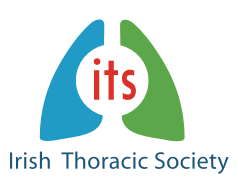What is tuberculosis?
Tuberculosis (TB) is a disease caused by infection with Mycobacterium tuberculosis (M. tuberculosis). This bacterium can attack any part of the body, but the disease usually affects the lungs (85% of cases).
The slowly progressive inflammation that occurs when a patient is infected with TB destroys tissues.
Minor TB infection may halt spontaneously but, without treatment, it may recur and progress in later life.
In the past two decades TB has again become a public health priority in Europe, as the number of TB cases has increased dramatically in Eastern Europe.
Since 1990, a substantial increase in resistance to drugs commonly used to treat TB has been observed across Europe.If the recent TB epidemic in Eastern Europe continues at its current rate, the number of cases is expected to increase by 2–3% annually. In Ireland respiratory tuberculosis remains a significant problem although the incidence rate per 100,000 has remained largely unchanged since 2000.
What causes tuberculosis?
TB is primarily an airborne disease, which is spread from an individual with active disease in tiny droplets when a TB sufferer coughs, sneezes, speaks, sings or laughs. Only people with active TB whose sputum contains M. tuberculosis are contagious. Lengthy contact with this type of patient is usually required before a person can become infected.
In most people infected with TB, the immune system fights the bacteria and can prevent them from multiplying. Only approximately 10% of all infected people develop active disease, the majority within 2 years of exposure to M. tuberculosis. In a substantial proportion of TB-infected individuals, the bacteria become inactive for a long time but remain alive in the body and can become active later in life as immunity decreases with age. This is called latent TB infection.
Risk factors for active TB include: poverty, malnutrition, poor housing conditions, inadequate healthcare systems, drug abuse (including alcohol) and old age. Genetic susceptibility may play an important role in determining whether an infected individual develops active disease. Patients infected with HIV have a much higher risk (up to 70-times) of becoming infected with M. tuberculosis and an up to 100-times higher risk of developing active TB than HIV-negative individuals.
Treatment of tuberculosis
With appropriate antibiotic treatment, TB can be cured in more than nine out of 10 patients.
Antibiotics
Several different antibiotic drugs are given in combination for TB for at least 6 months, sometimes for 12 months or more.
Resistance to treatment
Some strains of TB are resistant to a range of drugs (multidrug-resistant tuberculosis (MDR-TB)).
Treatment of MDR-TB requires the use of special TB drugs for up to 2 years.
However, the success rates of treatment in patients with MDR-TB are usually not as high as in patients infected by bacteria that are sensitive to treatment.
Treatment resistant TB
The increasing resistance of M. tuberculosis is currently a major concern.
Two types of treatment resistance can be found in TB-infected patients:
1. Resistance in patients newly infected with highly resistant TB strains, which is uncommon in most European regions.
2. Resistance in previously treated patients; this develops because of non-adherence to treatment, insufficient prescriptions, inadequate healthcare systems, insufficient drug supply, etc., which is very common, particularly in Eastern Europe.
Reproduced by kind permission of the European Lung Foundation
